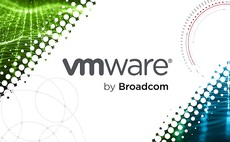The combination of cloud computing and viable open source platforms is providing a welcome alternative for cost-conscious organisations - challenging both the major software vendors and the big services providers
“We have specifically built this new platform to serve a lot of these smaller services companies and enable them to serve the sorts of customers they serve.”
But is it enough? All the major services companies face a challenge adding cloud to their portfolios of services without undercutting or cannibalising their existing businesses.
But clients aren’t necessarily “demanding” that their applications be put in the cloud. Rather, that tends to be the logical solution to pressing needs.
“We don’t tend to have people coming to us saying that they want to have their new application developed and hosted in the cloud. We tend to have people coming to us, telling us that they want an application to be developed, but that they have only so much money or that it has to be done quickly,” says Thomas.
In truth, says Brabban, big enterprise customers don’t want cloud and open source, per se, they want a full range of services, and the major IT services companies won’t be able to win new outsourcing and IT services business without also being able to offer secure cloud services.
Cloud and open source, though, is already generating a boom in software start-ups that simply would not have been able to get to market just a decade ago.
Instead of having to ramp up sales organisations and persuade companies to invest a chunk of their IT budget in a start-up that could be here today and gone tomorrow, cloud has lowered the barrier to entry for many such companies, the price of investing in their applications and the fear factor of investing in the software of relative newcomers.
Indeed, Simon Metson, an engineer at distributed database-as-a-service start-up Cloudant concurs: “A company like Cloudant itself wouldn’t exist if there hadn’t been the cloud providers to provide the underlying infrastructure,” he says. “The guys starting up the company five years ago wouldn’t have even had the money to buy the necessary hardware.”
He continues: “We have been able to build the business by riding on the back of providers who are able to give us the infrastructure to run from.”
Marching together
Marching almost in lockstep with cloud is open source software.
One of the key reasons why open source software has become more popular in the cloud is partly because it enables costs to be driven down even further, but also because packaged software vendors’ licensing models tends to preclude use in other organisations’ clouds.
Indeed, Fujitsu is unable to offer Oracle database technology on its public cloud for that very reason. It is, says Thomas, “basically impossible, so we tend to offer PostgreSQL instead”.
ATOC, meanwhile, says that it switched from Oracle to MySQL for the explicit purpose of cutting licensing costs. Indeed, while it is possible to run Oracle in the Amazon cloud, it isn't possible to run it in any cloud without sorting out a licensing arrangement with Oracle first.
But ATOC’s use of open source in its new developments is not restricted simply to Linux and MySQL. It is much more extensive than that, says Meehan.
“ATOC is using an open-source integration platform, an open source-based identify and access management platform, an open source database, and so on,” says Meehan.

He adds: “I’ve been waiting for open source to break through into the enterprise market mainstream. We have been using open source ‘forever’, especially at the developer level... What hasn’t happened until relatively recently in the enterprise market was the breakthrough of open source at the component-packaged level.”
Ironically, MySQL, the open-source database that fell into the lap of database giant Oracle when it acquired Sun, is proving a popular alternative to proprietary databases. Should Oracle attempt to stifle its popularity, users could easily turn to MariaDB, a “fork” of the MySQL code commandeered by its original developer, Monty Widenius, when Oracle acquired MySQL.



















